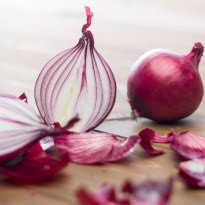Back in the 60s, the Green Revolution changed the way we looked at food, both in terms of growing and eating. The focus was simply this — to increase production of staples so no one would go hungry.
Today, most of us do get enough to eat, in terms of calories, but we still may not be getting our essential micronutrients, such as iron and zinc. In other words, our focus has shifted from quantity to quality. This ‘hidden hunger’, a term used to describe dietary micronutrient deficiencies, must be taken care of. The answer, find researchers, is biofortification.
Simply put, biofortification is the process of growing crops to increase nutrition value from the seed on. It’s not the same as ‘fortified’ foods that have micronutrients added to them during processing. Crops can be biofortified through selective breeding or genetic engineering. In India, biofortification is done exclusively through selective breeding. Though biofortified foods are not available off the shelf just yet, it’s really the next big thing in nutrition to look out for.
The numbers
The most common micronutrient deficiencies are iron and zinc, with 2 billion people affected worldwide with anaemia (30% of the world’s population), says the World Health Organization. Vitamin A deficiency is not far behind. This triad, vital to our health, especially for the development of children, women, and other vulnerable sections (seniors or those who have low immunity), is the focus of biofortification research.
Micronutrient deficiencies affect 38% of pregnant women and 43% of preschool children, worldwide. You’d imagine that these are rural problems, or those that affect only people who cannot afford healthy diets. Not true. Naaznin Husein, dietitian and president of the Indian Dietetic Association (Mumbai Chapter), says that the well-to-do urbanite with an unhealthy lifestyle and dependence on processed foods is also a part of the statistic.
Zinc deficiency is particularly harmful says Husein, as zinc plays a role in more body functions than any other mineral. In India, 52% of children under five are zinc-deficient, says Dr M Govindaraj, Principal Investigator (Biofortification) at the International Crops Research Institute for the Semi-Arid Tropics (ICRISAT), while 80% of pregnant women, 52% of non-pregnant women, and 74% of children (between 6-35 months) suffer from iron-deficiency-induced anaemia.
The movers and shakers
More than 20 years ago, Howarth Bouis, Director of HarvestPlus, asked the question: ‘What if we could develop seeds that had a higher content of iron or zinc?’ Today, at least 15 million people in more than 30 countries grow and eat biofortified crops. HarvestPlus is an alliance for biofortification that leads the efforts to develop, utilise and scale such crops across the world.
In India, the focus is on six staples, says Binu Cherian, country manager, HarvestPlus. These are pearl millet (iron), wheat (zinc), sorghum (iron), rice (zinc), cowpeas (iron) and lentils (iron and zinc). Currently, biofortified pearl millet, rice, and wheat are available to farmers in India.
The technology
All grains inherently have a certain amount of micronutrients. This forms the basis for crop selection, says Dr Govindaraj. For example, the average iron content of millet (all types) is 47mg/kg, which is 300-500% more than that of other cereals. Rice varieties, for instance, have an iron content of less than 20mg/kg. When it comes to zinc, pearl millet or bajra varieties have higher zinc content than the best rice varieties, but not the best wheat varieties. So, it makes sense to improve upon the naturally-high iron levels in pearl millet.
The first step in selective breeding is screening. Existing crop varieties with the desired characteristics are identified. These are then cross-pollinated over several generations to produce plants with the desired levels of micronutrients as well as other traits, such as high yield per cycle. After thorough testing in labs and on farms, the plants are evaluated for the required trait (like iron content) as well as other traits, such as pest resistance and weather resilience. Finally, the seeds of the best-performing plants are multiplied and supplied to farmers.
The impact
After a decade of testing, the first iron-rich pearl millet named Dhanashakti was released in 2012 in Maharashtra, and in 2013 across India. Just 100 grams of Dhanashakti can provide children 100% of the Recommended Dietary Allowance (RDA) of iron, says Dr Govindaraj. Studies also show that iron-deficient women can absorb twice the amount of iron from this variety, when compared to non-biofortified grain. In fact, consumption of 200 grams of Dhanashakti every day can provide women with more than 80% of their daily iron needs. In the next five years, we are likely to see biofortified foods on the shelves.
[source:-thehindu










